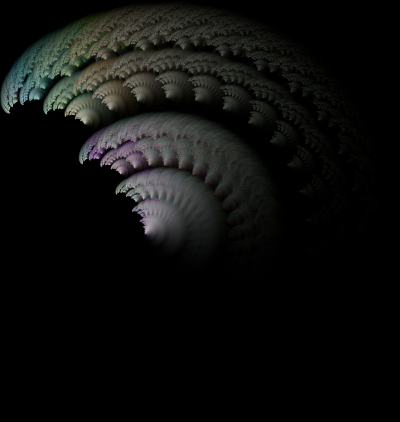IFS. Iterated function systems: A set is similar to parts of itself. The similarity is mediated by a small number of affine Transformations. One can compute such a set approximately by transforming a point millions of times with maps randomly chosen from these transformations and recording for each pixel how often the point has landed there.
The coloring algorithm for my images is similar to that used for fractal flames. There, the brightness of a pixel is is proportional to the logarithm of the number of times it has been hit by the jumping point. For example, if a part of the fractal that got on average 10 hits per pixel (logarithm: 1) overlaps with a part that got on average 100 hits per pixel (logarithm: 2), then the pixels in the overlap zone have on average 110 hits (logarithm: 2.04139...). That differs little from log 100=2, hence the part with the 10 hits per pixel appears covered. This can lead to a 3D impression, like for example in this image:

To get colorful pictures, the jumping point is equipped with an additional color coordinate that is also changed by the transformations. A random palette determines which color is associated with the current color coordinate and used to color the pixel array.
The program that I used to calculate these images is available here. Under most thumbnail images there is a link to a text file that contains the settings used for generating the image. The text file can be read with the program in order to, for example, calculate the image in higher quality or to create altered versions. A zip archive containing all text files can be downloaded here.
Some image files are very large, so better don't click on them if you don't want to download the specified amount of megabytes.